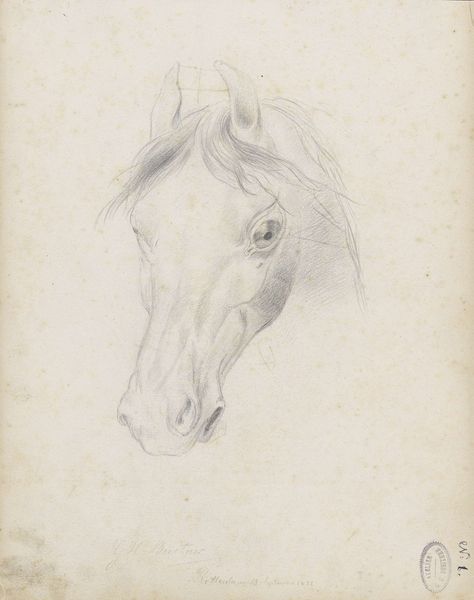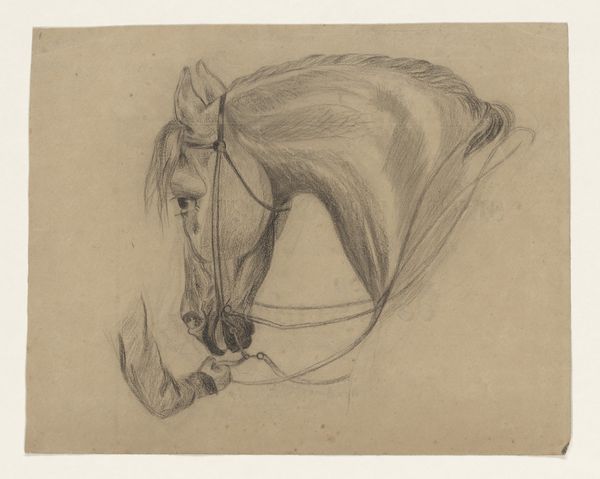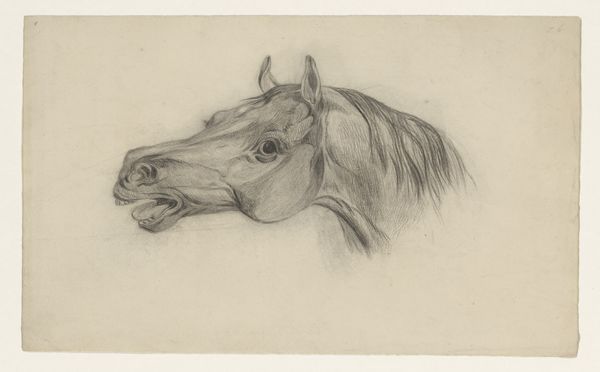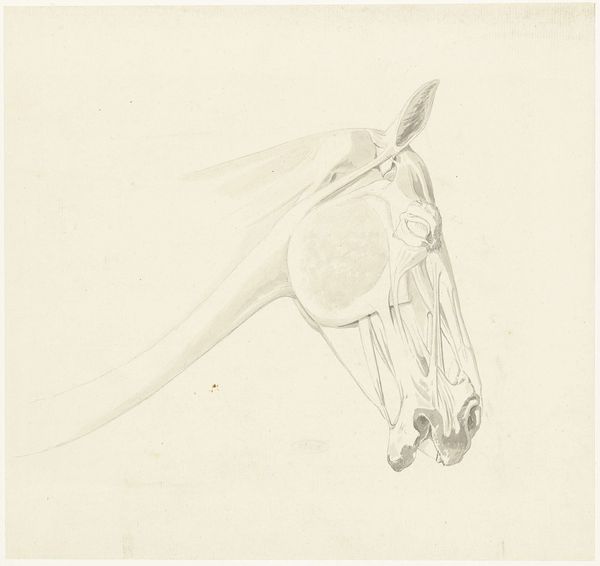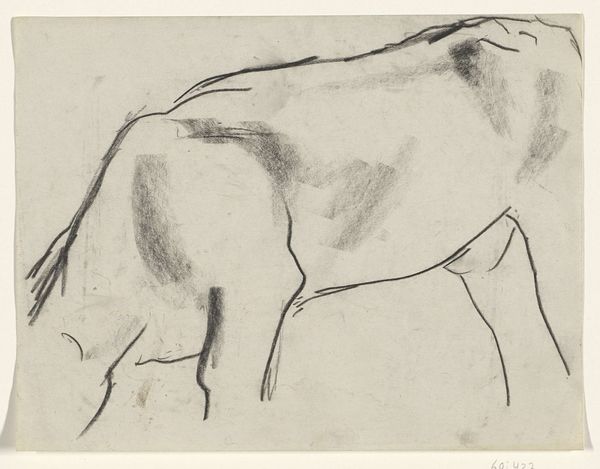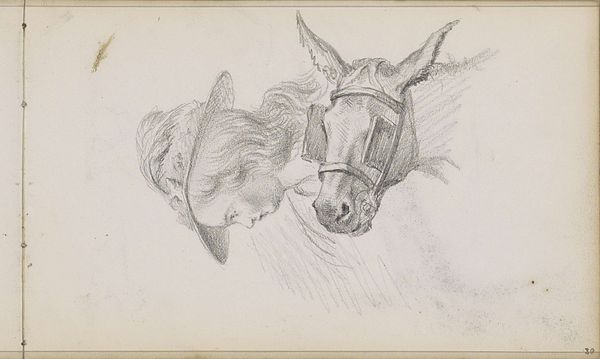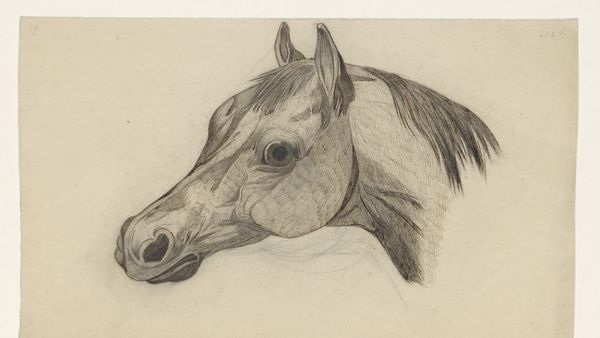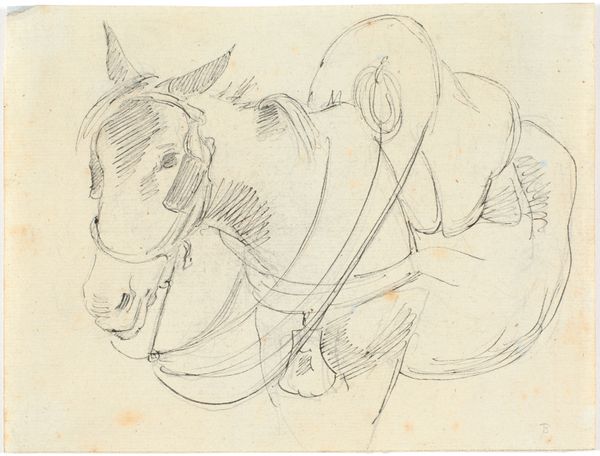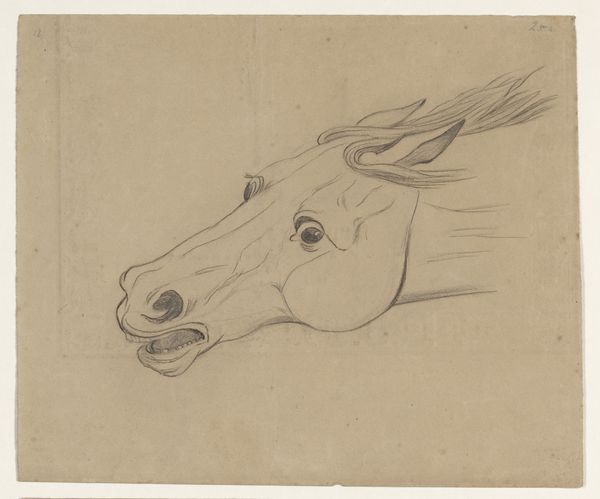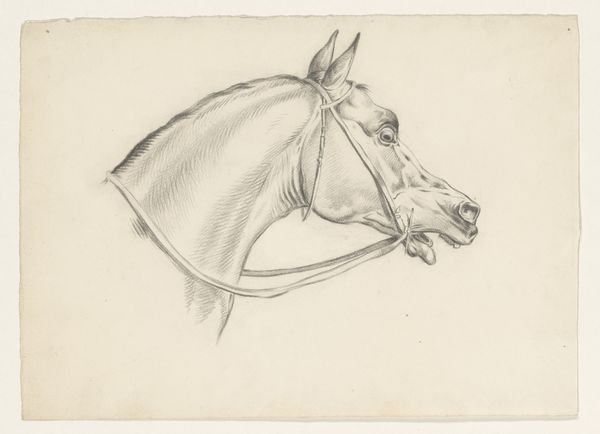
drawing, pencil
#
portrait
#
pencil drawn
#
drawing
#
pencil drawing
#
pencil
#
academic-art
#
realism
Dimensions: overall (approximate): 24 x 29.3 cm (9 7/16 x 11 9/16 in.)
Copyright: National Gallery of Art: CC0 1.0
Editor: Alphonse Legros's "Head of a Horse from the Parthenon," created in 1898 with pencil, presents this magnificent sculpture with incredible detail and sensitivity to light. The overall feel is one of quiet reverence, highlighting the power and the skill required to create such an evocative representation of marble using just a simple pencil. What do you see in this work, especially regarding its materials and the means of its production? Curator: This drawing offers an interesting study in contrasting materials. Legros takes a grand marble sculpture, itself a product of extensive quarrying, carving, and collective labor, and renders it with a humble pencil. The social context is relevant here. This wasn’t simply about replicating the sculpture; it was about understanding and reinterpreting its essence through a different, readily accessible medium. Editor: So, you're saying the choice of pencil diminishes or perhaps democratizes the original sculpture's grandeur? Curator: Precisely. Pencils and paper were becoming more readily available, marking a shift in artistic production. Legros isn’t just making a copy. He’s engaging in a dialogue with the Parthenon, exploring themes of accessibility and reproduction. He is drawing attention to both the labour required for monumental sculpture as well as how easy it is to capture such images on a single piece of paper, produced in mass. Editor: That’s fascinating! It makes you think about the whole system of art production and how the choice of material carries such a strong message. It seems like in Legros's time the materials shaped the access people had to it, even shaping public perception. Curator: Absolutely. We move from inaccessible marble, reserved for monumental projects supported by powerful entities, to easily acquired pencil, now available to middle class artists who wish to capture images of Greek sculpture, which at the time stood for the finest art. Editor: This has completely changed my perspective on this drawing! I see it now as more than just a study, but as a commentary on art production and consumption. Curator: Indeed. Focusing on the materiality and methods brings new insights into works of art, wouldn’t you agree?
Comments
No comments
Be the first to comment and join the conversation on the ultimate creative platform.
